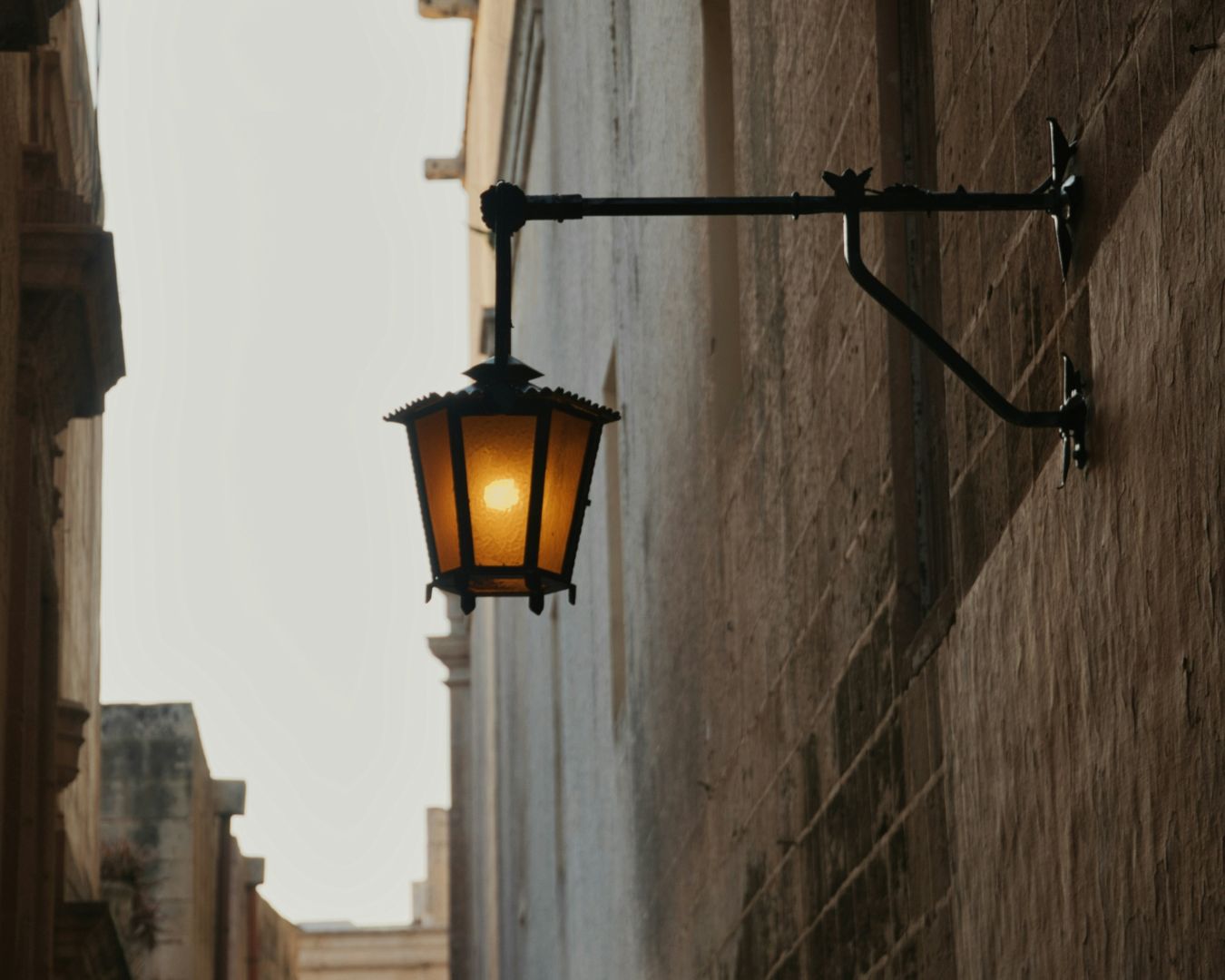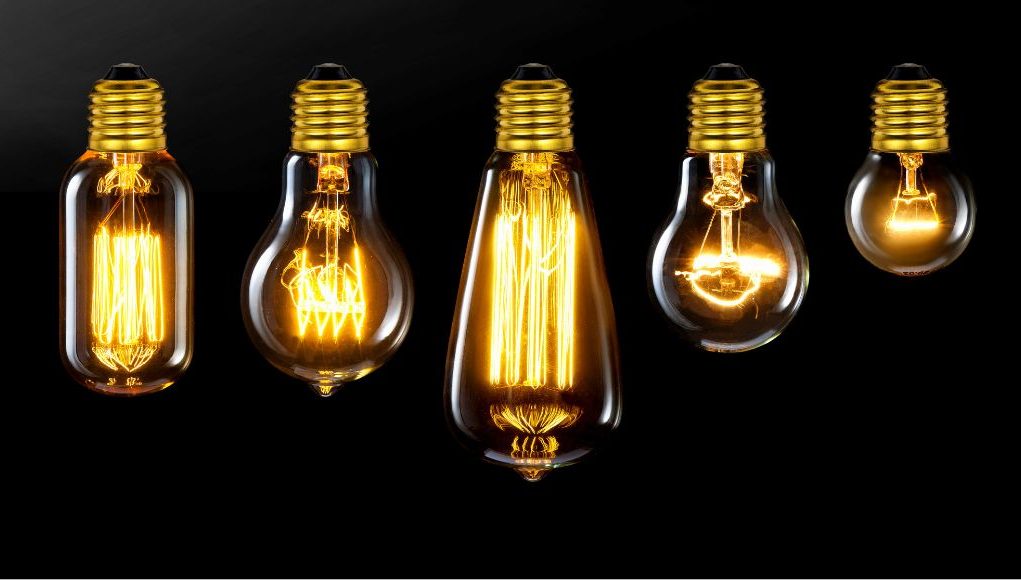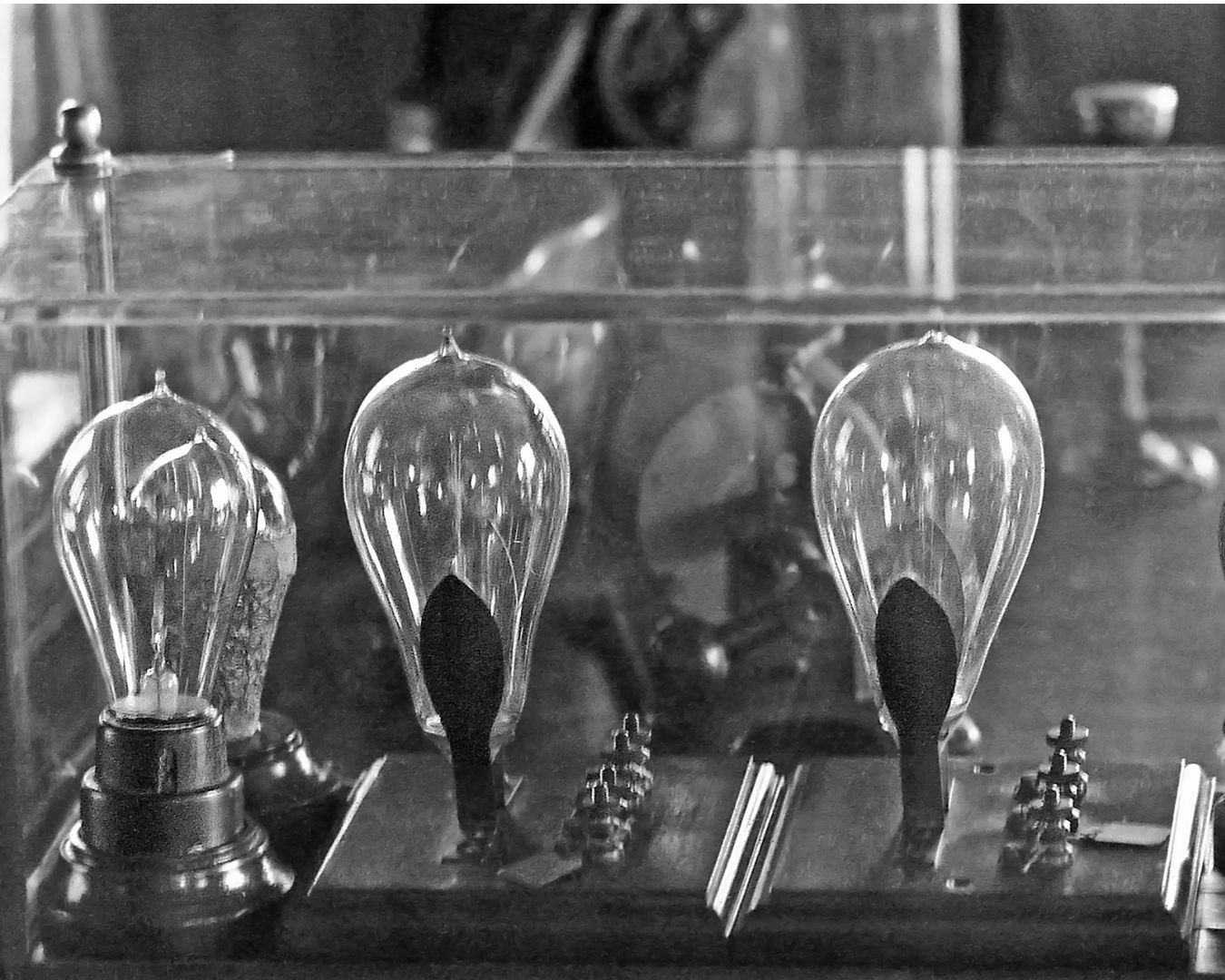Imagine being a lamplighter in the late 1870s, and some inventor from across the world, whom you haven’t even heard of, develops a light source so revolutionary that it will eventually make gas lamps practically obsolete in a few years—which makes lamplighting jobs like yours obsolete as well.
Oh, the drama. But not as dramatic as the lighting revolution has been, even before—but especially right after—the invention of the incandescent bulb.
Buckle in because in this post, we’re going to talk about the history of the light bulb. We’re travelling back in time to witness a tale of false starts, the myth and the truth between fierce rivals, and a revolution so bright it will literally light up the world for years to come (and sadly mess up our circadian rhythms).
Pre-Edison Electrical Lighting Efforts
Before Edison had his “light bulb moment” (literally), inventors across Europe and America were already making strides in producing light using electricity. A British chemist, by the name Humphry Davy, connected a battery to a device where electric current arced between two carbon rods, producing a blinding flash now known as the arc lamp.
And although, aside from light, it produced a rather strong smell, some noise, and heat that could toast a turkey, these arc lights, compared to the familiar oil and gas lamps, were produced almost as if by magic.
Even if harsh and flickering, the light produced by arc lights/lamps was significantly brighter than that of gas lighting, making them ideal for illuminating streets and large public spaces. Cities like Paris, New York, and London adopted the arc lighting system for their streets.
The need for specialised equipment to operate them and their size made the arc lamps impractical for home use, which is why the search for a smaller, more efficient lighting source did not stop with them, but rather, snowballed instead.
The Race to Create the First Practical Bulb
Throughout the early 19th century, other inventors toyed with similar glowing gadgets. But they all had the same Achilles’ heel—too much power consumption, short lifespans, and components that didn’t exactly scream “mass-market friendly.”
We had electric light. But we just didn’t have a light bulb.
Humans now know that we can harness electricity to produce light. By the mid-1800s, inventors weren’t just dreaming of glowing filaments—they were sprinting toward them like kids chasing fireflies. The holy grail? A bulb that was long-lasting, low-cost, and actually usable at home.
If only there were someone with a bright idea (pun intended).
Edison, Swan, and the Lighting Revolution
Enter Joseph Swan, a British physicist who made significant contributions to both the electric and photography fields (but we’re focusing only on the former). He focused on creating a carbon filament that wouldn’t burn up instantly in the vacuum of a sealed glass bulb. However, the vacuum pumps of 1855 were not very effective, so he abandoned his efforts and focused on photography until 1877, when someone finally developed a decent vacuum pump, allowing him to resume his work on the light bulb.
Finally, on February 3, 1879, in front of a crowd of 700 in Newcastle, Swan demonstrated his finished light bulb and then electrified his house, and ultimately an entire street in Newcastle, making his house “the first house in the world to be wired for domestic electric lighting” as stated by the plaque on his home at Underhill, Gateshead, England.
Thomas Edison, meanwhile, was an American inventor who announced that he could develop an electric bulb in October of 1878 (one year before Swan’s demonstration, but 30 years after his carbon filament idea).
In reality, Edison did not invent the light bulb, per se, since many inventors had already developed earlier versions of it, only running into the problem of commercial practicality since the bulbs either used expensive materials for their filaments or didn’t last long (only a few hours). Thomas Edison was not the one who invented the lightbulb; he was the one who solved these flaws by using a carbon filament, earning him a US patent for the invention.
But, as it would happen, Joseph Swan already had the same incandescent electric lamp. To avoid a lawsuit, and since Swan’s invention preceded his, he and Swan formed a joint company, Edison & Swan United Electric Light Company, commonly known as “Ediswan.”
So, how did the merger of these two great inventors lead to the lighting revolution?
Though they practically invented the same thing (or solved the same filament problem in incandescent lighting), the reasons for their inventions were different.
Edison’s goal in developing his lamp was to use it in conjunction with the large-scale electric-lighting utility he was creating. In other words, Edison was determined not just to invent a light bulb, but to invent a system to power it.
Swan’s original lamp design had low resistance and was not suitable for such applications. But he had strong patents in Great Britain that the two could exploit by merging, thus leading them to establish Ediswan, spreading the use of incandescent light all around the world.
Then why is Thomas Edison credited as the inventor of the light bulb?
Edison may not have been the first to invent the light bulb, but he was the first to make it commercially viable. That’s a crucial distinction. He didn’t just give the world a bulb—he created the infrastructure, generators, and electric systems to make it accessible.

Impact on Society and Industry
Now that we’re done simplifying the history behind the invention of the light bulb, it’s time to appreciate just how radically the incandescent bulb changed everything.
Before electric lighting and the Edison light bulb, people relied on candles, gas lamps, and fancy oil lamps. Nighttime wasn’t just dark, it was expensive and dangerous. Reading a book before bedtime? Dangerous. The dark soot from open fire lighting? Unhealthy. And need I remind you of the dangers of a gas leak?
Edison’s bulb not only made the night safer, it also extended the workday. Night shifts in factories became possible, shops opened later, and cities transformed—glowing streetlights replaced flickering gaslamps and made urban life safer and more vibrant. Home lighting became clean, convenient, and revolutionary.
In short: the incandescent bulb didn’t just light rooms—it lit the fuse of the modern world, literally.
How Incandescent Bulbs Compare to LEDs Today
Don’t tell Swan and Edison, but while the beloved incandescent rallied a revolution in lighting, more than a century later, incandescent light bulbs would lose their spark. (Shush!)
Enter the age of light-emitting diodes (LEDs). If the incandescent bulb is a steam engine train, LEDs are magnetic bullet trains. The difference is worlds apart. If Edison saw LEDs with his own eyes, they’d pop out (maybe from shock, maybe from excitement, who knows).
LEDs are efficient, long-lasting, and cool—literally, you can touch them without burning your fingertips (unlike some traditional light we know).
The [Massive] Difference
Incandescent bulbs produce light by heating a filament inside a vacuumed glass bulb until it glows without burning. The result is a hot and sizzling bulb.
LEDs, on the other hand, pass current through a semiconductor, converting electricity directly into light without heating any components, thus producing light more efficiently without the accompanying sizzling heat.
With LEDs, you can even change the colour of your light from cosy white to bright daylight tones. And with the introduction of RGB, you even have access to millions of colours.
With their long lifespans, LEDs also lower a home’s carbon footprint, making them a good choice for nature preservation. Governments around the world have even started phasing out incandescent bulbs in favour of LEDs, citing energy conservation and climate goals.
Edison’s invention lit the world—but it’s the LED that’s future-proofing it.
Final Thoughts
Edison was revolutionary in the sense that he transformed electricity from a scientific curiosity into a public utility.
And though the incandescent bulb might be dimming in the LED age, its legacy burns brighter than its filaments. It has transformed our homes, reshaped industries, and quite literally illuminated the path to the 20th (and 21st) century.
Thomas Edison may not have been the first to develop the light bulb. But he certainly helped make it matter.
All of the innovations of modern light technology are thanks to a glowing bit of wire in a vacuum. Think of it this way: every bit of light that shines at night wouldn’t be here if not for the minds that saw a problem and worked tirelessly to solve it.
If you want to uncover more of the history of lighting, check out The Evolution of Lighting – From Fire to LED Innovation.














